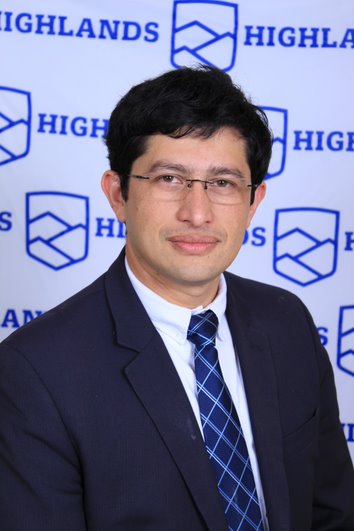Learning with Technology: Purposeful Projects in Society.
,
Colorado Convention Center, Bluebird Ballroom Lobby, Table 23
Presenters






Session description
Purpose & objective
Educational or infrastructure challenge/situation.
The problem was identified through interviews conducted with Full-Time Evangelizers in the municipality of San Juan Opico, La Libertad, El Salvador. These activities were part of a project in the Civics and Ethics class. The interviewees informed us that many community members they serve lacked the necessary skills to effectively plan and manage their income and expenses. This led to recurring financial problems such as debt and a lack of savings for emergencies.
As a result, it was determined that the lack of knowledge in managing family finances is a significant concern in the communities of the municipality. A plan was then established to address this issue, which involves organizing educational workshops on family financial management and developing online tools and resources to help individuals improve their financial skills.
The main resource used to achieve the final product was the MIT App Inventor website, which helped us make the application possible. We specifically chose this website because we learned how to create mobile applications in our technology class. It provided us with the necessary skills to develop applications in a creative and innovative way. The website's user-friendly interface allowed us to modify the content of each screen according to our preferences, such as changing fonts, colors, styles, and layouts.
In addition to MIT App Inventor, we utilized other resources throughout the process, including:
Google (for information research throughout the project)
Filmora Pro (for video editing)
Word (for document creation, report writing, and submission)
PowerPoint (for creating presentations on diagnosis results and solution proposals)
App Store or Google Play Store (for installing MIT AI Companion)
MIT AI Companion (for scanning the QR code and using the application on a mobile device)
Mobile phones (for testing and using the application, as well as recording)
Canva (for editing and designing photos used in the application, as well as for sketches)
Teams (for team organization, communication, and document sharing)
Computers (used throughout the entire process for editing, reporting, programming, designing, testing, and creating).
These resources played a crucial role in the technological intervention, enabling us to develop and implement the application effectively.
Models employed
Through problem-based learning and project-based learning, this proposal allows students to apply their ideas to real-life situations. They acquire skills that are relevant to their lives and also develop competencies aligned with their academic levels.
Lesson plans or instructional activities/strategies employed.
Session 1:
Understanding the Project
In this session, a review of the project's purpose and expected learning outcomes is conducted. The evaluation rubric for each product or artifact is shared. Work teams are formed, and communication channels are established on Teams for effective communication.
Sessions 2-3:
The investigation of the problem to be addressed begins.
Sessions 4-5:
Sketches of possible ideas for the solution are created.
Sessions 6-10:
Creation of the artifact that addresses the identified need.
Session 11:
Presentation of the journey taken to develop the product. Presentation of the functional artifact.
Evidence of Success:
For evidence of success, we have compiled photographs, videos, and documentation showcasing the project and its development process. These materials are included in the OneDrive link provided.
link: https://correohighlandsedu-my.sharepoint.com/:f:/g/personal/fgoa2008_alumnos_highlands_edu_sv/Ek3mvXlkERpJhnn5rJX-Lj0BOJPfkB4q18Ima0N7wvbfaw?e=1Q2WEY
Proposal for Project Scalability:
As our application is still in development, for a potential second version, we propose adding more options for users to track their expenses, such as tuition fees, personal expenses, and vacations. Additionally, we aim to expand the application to become a larger and global platform, catering not only to the specific needs of El Salvador but also to other countries.
To further improve the application, we plan to enhance its design and color scheme to make it more visually appealing. We also aim to create a stable version that can be uploaded to the Google Play Store, allowing more users to download and utilize the application.
Outline
Introduction: 1 minute
Educational or Infrastructure Challenge: 2 minutes
Technological Intervention: 2 minutes
Employed Models: 1 minute
Evidence of Success: 2 minutes
Project Scalability Proposal: 1 minute
Conclusion and Questions & Answers: 1 minute
Supporting research
Gaitán, G. S. (2022). Análisis de la pobreza en El Salvador: una aproximación del nivel de afectación producto de la crisis provocada por el COVID-19. Facultad de ciencias Económicas, 2-4.
Gráfica, L. P. (22 de Agosto de 2022). Tasa de pobreza en 10 departamentos supera elpromedio nacional en El Salvador. Recuperado Octubre 2022, de El
ECONOMISTA: https://www.eleconomista.net/actualidad/Tasa-de-pobreza-en-10-departamentos-supera-el-promedio-nacional-20220825-0004.html}
Molina, K. (24 de agosto de 2022). Más de 1.5 millones de salvadoreños vive en pobreza, según encuesta de la DIGESTYC. Noticias De El Salvador - Noticias De El Salvador, Noticias Internacionales, Salvadoreños Por El Mundo, Economía, Negocios, Política, Deportes, Entretenimiento, Tecnología, Turismo, Tendencias, Fotos, Videos, Redes Sociales. https://www.elsalvador.com/noticias/negocios/pobreza-trabajo-empleo/990663/2022
Session specifications
Tablet: Android, iOS
https://appinventor.mit.edu/explore/ai2/setup-device-wifi
Innovative Designer
- Students select and use digital tools to plan and manage a design process that considers design constraints and calculated risks.
- Students understand the fundamental concepts of technology operations, demonstrate the ability to choose, use and troubleshoot current technologies and are able to transfer their knowledge to explore emerging technologies.
- Students build knowledge by actively exploring real-world issues and problems, developing ideas and theories and pursuing answers and solutions.
 Return
Return Participate and share: Poster
Participate and share: Poster  Trips and Tours
Trips and Tours